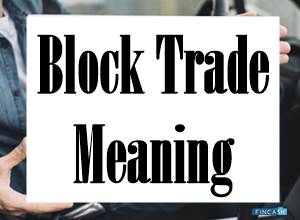
Table of Contents
Bear Trap Trading
A bear trap is when the price behaviour of an index, stock, or other Financial Instrument misinforms traders that a negative trend is about to turn upward. According to a technical analyst, institutional traders strive to set up "bear traps" to entice ordinary investors to buy stock.

The institutional trader has the opportunity to sell greater amounts of stock which would otherwise drive prices significantly lower if the trader succeeds and the price briefly rises.
How do Bear Traps Operate?
Many investors might search for stocks in various markets, but few sellers are prepared to accept their offers. The price the purchasers are ready to provide for the shares in this situation may rise. As a result, more sellers will probably enter the Market, and the market increases due to the purchasing and selling pressure imbalance. However, as investors only make money when they sell their shares, when acquiring stocks, they automatically put selling pressure on that stock. As a result, if an excessive number of people purchase the stock, the purchasing pressure will be reduced, and the selling pressure could increase.
Institutions may cut prices to make the markets appear negative to boost demand and raise stock prices. Novice investors sell a stock because of this, and investors rush back to the market when a stock declines in value, driving up stock prices and demand.
Why are Bear Traps for Sale?
A bear trap starts when the price falls below a crucial support level and moves lower. Suppose an investor or trader anticipates downward movement after a break from the resistance line. Thus, after the price reverses back upward, they are "stuck" and suffer financial loss.
The following factors lead to a bear trap:
- Price decline below a crucial support level
- A trader or investor opens a short position
- An upward price reversal follows a temporary drop below the support level
Talk to our investment specialist
How to Avoid a Crypto Bear Trap?
A trader can only escape a bear trap by never taking a short position in the first place. However, shorting alternatives include put options and techniques to avoid some circumstances, like low trading volume.
You can evade a bear trap by:
- Staying away from short positions while the trading volume for the investment security is low can raise the risk of bear traps.
- Using alternate trading techniques to reduce losses, like purchasing put options.
- Using Fibonacci levels Technical Analysis tool to identify support and resistance levels.
- Completely avoiding taking a short position
Bear Trap vs. Bull Trap
A bull trap and a bear trap entail a false signal indicating a break in the trend, followed by a reversal resuming the previous trend. Both times, the trader or investor suffers a temporary loss. The key distinction between bear traps and bull traps is the polarity of the trends and reversals.
Bear Trap
Following an upward price trend, a sharp fall below a major support level gives a misleading bearish signal that tempts bearish traders to sell short, only for the price to reverse higher.
Bull Trap
Following a downward price trend, a quick price break above a critical resistance level gives a misleading bullish signal that tempts optimistic traders to open long positions, only for the price to reverse downward.
Short Selling vs. Bear Traps
A financial market investor who anticipates a drop in a security's price is known as a bear. According to bears, the general trajectory of a financial market may decline. A short position is frequently taken to carry out a negative investment strategy since it aims to profit from an asset's price drop. A short position is a strategy that a broker uses to borrow shares of an asset through a Margin Account. The investor makes a profit from the price reduction by selling those borrowed instruments to acquire them back at a lower price. The likelihood of falling victim to a bear trap rises when any investor mistakenly predicts the price collapse. When the price of an index or a stock keeps rising, a short seller risks maximising their loss or getting a margin Call. By using stop losses when executing market orders, an investor can reduce the harm caused by traps.
Conclusion
Anybody can fall victim to trade traps. Investors generally believe they have something the market as a whole lacks, only to have the market turn the tables on them. Nobody can always avoid this outcome. Thus, there is no reason to be humiliated. The difference is in how investors respond when caught in a runaway trade. They still have an option over how they will respond even if the stock gaps up and skips their stop loss. Either they swiftly abandon the trade after admitting they made a mistake and nurse their wounds or try to gamble with the future of their funds by "trading around" their position.
All efforts have been made to ensure the information provided here is accurate. However, no guarantees are made regarding correctness of data. Please verify with scheme information document before making any investment.











